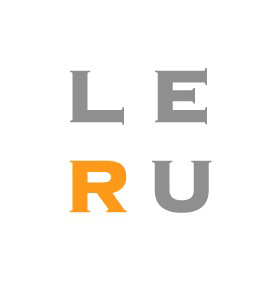Tentamen
Final exams
Find schedule for final exams, including re-exams, here.
Subscribe to re-exams here.
Example questions for the final exam part A is found here. The questions on part B will be similar to the questions in this example.You can also check last year's exams below.- Part A 2010-12-17 (with answers)
- Part B 2010-12-17 (with answers)
If you aim for higher grades (4 or 5) you have to study on your own the parts of the textbook marked Extended Reading in the Study Guide, and make account for that on part B of the final exam. Questions will be asked on the following chapters:
- 8:4 Packet Switching
- 23:4 STCP
- 24:7-8 IntServ och DiffServ
- 26:2-3 Mail och FTP
- 27: WWW och HTTP
- 28: Network Management
- 29:3-4 Streaming Audio and Video
- 31: Network Security
- 32.3: PGP
You are allowed to bring a paper with notes to the exam, one note paper per part A and B respectively. You may fill one (1) A4 page (the back must be left blank) with all notes and figures you think you need for exam part A, and one A4 paper (blank back) for exam part B. The notes and figures must be in handwriting with ink, it must not be possible to change the content during the exam. All notes and figures must be produced by yourself, cut-and-paste is not allowed. You have to write your name on each paper and also mark them with the exam part it belongs to. You must hand in your notes together with the exam. It is of course voluntary to use a note page, but if you do, it is an absolute demand that you hand them in. Irregular note pages will be confiscated immediately. Apart from the note pages, calculator is the only resource allowed on the exam.
Midterms
There will be three midterms/duggor and a final exam in this course. The midterms/Duggor are optional. Read more in the course program.
Midterms/Duggor will be performed in the departments moodle system. You will get approx 15 questions randomly selected from a question pool.
Midterm 1 will cover the contents of Lecture Group 1 (24-25/10). In other words:
- Chapter 8, Section 4: Structure of Packet Switches - This is actually extended reading, which means we won’t hold you accountable for the textbook’s contents on pp. 232-235. However, the concepts explained in the first lecture, such as router architectures and functions, input and output ports, switching fabrics, and the objectives of routing, are included in the midterm.
- Chapter 22, Sections 1 to 4: Network Layer - Delivery, Forwarding, and Routing, pp. 647-699 -- We covered the whole chapter. Routing metrics, unicast vs. multicast routing, intra- vs. inter-domain routing, distance vector vs. link state routing, implementation of the algorithms (RIP, OSPF, BGP, MOSPF, DVMRP, CBT, PIM-SM, PIM-DM, MBONE), the forwarding process and the routing tables are all included. Also, terms like pruning and grafting, explained during lecture 2, are included.
- Chapter 21, Section 3: IGMP, pp. 630-638 -- Keep in mind that, although we haven’t covered them in the lecture directly, topics like Encapsulation and Tunnelling are also part of the section.
Midterm 2 will cover the contents of Lecture Group 2 (7-8/11). In other words:
- Chapter 23, Sections 1 to 3 – pp. 703-735: The objectives and functions of the transport layer, process-to-process delivery, addressing in TCP/IP, use of port numbers, UDP, TCP.
- Chapter 3, Section 6 – pp. 89-94: Performance, bandwidth, throughput, delay, bandwidth-delay product, jitter (see also 29.5 below).
- Chapter 24, Sections 1 to 6 – pp. 761-780: Traffic descriptors and profiles, congestion, congestion control methods, congestion control in TCP, quality of service, packet scheduling, traffic shaping.
- Chapter 29, Section 5 – pp. 912-915: Real-time interactive audio/video requirements, jitter, timestamping, buffering, numbering.
Midterm 3 will cover the contents of Lecture Group 3 (21-22/11). In other words:
- Chapter 20, Sections 2 to 4: IPv4, IPv6, protocol differences, transition strategies, datagram fragmentation
- Chapter 21, Sections 1, 2, 4: BOOTP, DHCP, ICMP, purposes, uses and operation
- Chapter 25, Sections 1 to 10: DNS, domains, zones, name spaces and hierarchy, name resolution techniques, updates
- Chapter 29, Sections 6 to 8: RTP/RTCP, purposes and operation, VoIP, protocols and operation
- Chapter 32, Sections 1, 2, 4: IPSec, modes, protocols, authentication, encryption, VPN, SSL/TLS, parameters, protocols, Firewalls

